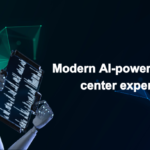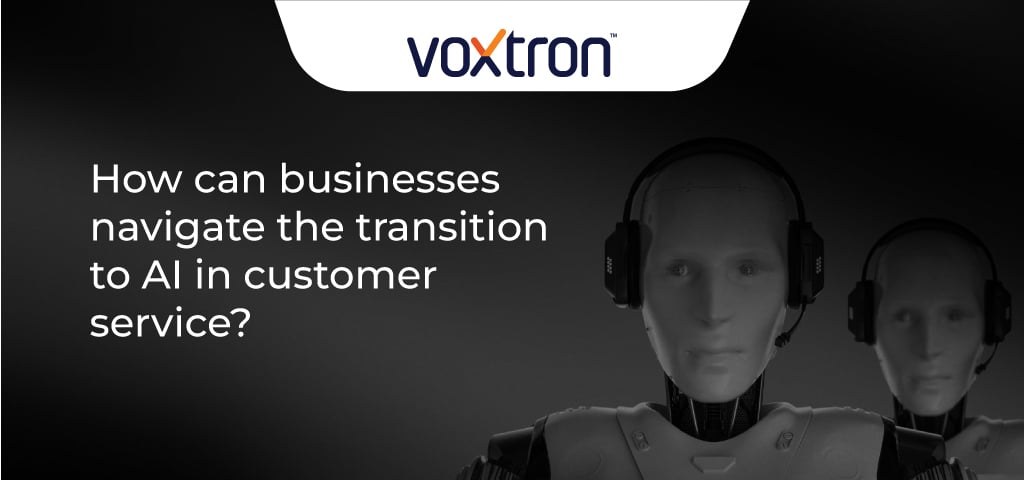
How are AI-Powered Solutions Revolutionizing Customer Experiences in Contact Centers?
December 21, 2023
How to Leverage Contact Center Chatbots for Improving Sales and Marketing Efforts?
January 24, 2024The Future of Contact Center Chatbots: How can businesses navigate the transition to AI in customer service
Visionary leaders recognize exceptional customer experience (CX) as a key weapon in today’s fierce marketplace. They abandon outdated models and embrace customer-centric operational strategies for long-term success.
In this shift, AI emerges as a transformative tool. By relieving customer-facing employees of repetitive tasks, AI frees them to participate in more complex and rewarding interactions. This enables contact centers to be both customer-centric and employee-centric, driving industry-wide change.
A survey by Allied Market Research projects a tenfold increase in AI’s valuation from $1 billion in 2020 to a potential $10 billion by 2030. This rapid ascent underscores the transformative power of AI in customer service.
Hence, AI will soon be a valuable tool that enables contact centers to be both customer-centric and employee-centric, driving a revolutionary transformation within the industry. While the possibilities are exciting, implementing AI presents company-wide challenges.
Let us explore the most common hurdles on this journey towards AI-powered customer service.
What are the common challenges of transitioning to an AI-based Contact Center?
Though AI presents tangible benefits for an organization, implementing it is a drastic change. It will naturally disrupt operations and necessitate diverse technical and operational adjustments. Here are some of the challenges it involves.
- Technological Integration Complexity:
Incorporating AI into a contact center requires intricate technological integration.
Legacy systems in older organizations often operate on different architectures, making it essential to bridge the gap between existing platforms and advanced AI tools. This complexity often leads to the need for specialized expertise. To navigate these integration challenges, they would have to invest in new technology and skills.
- Workforce acceptance
Any change in an organization will be accompanied by resistance. AI introduction is no exception.
Employees may be unhappy or concerned about adopting this new technology. It will introduce changes to the workflow, and they may not be thrilled about the learning curve involved.
- Data Security and Privacy Concerns:
As AI systems handle vast amounts of sensitive customer data, ensuring robust security measures is paramount. Contact centers must invest resources and time in understanding and implementing stringent data protection regulations to safeguard customer information.
- Customer Experience Optimization:
Balancing AI integration with delivering personalized customer experience is not always easy.
In the past, customers despised robotic IVR menus and other technological changes that confused them. It also created a disconnect with customers who preferred human interactions. So, extra efforts are necessary to strike a balance between contact center efficiency and customer satisfaction, when AI comes into the picture.
- Continuous Monitoring and Improvement:
Customer interactions evolve with time. Hence, it becomes a continuing need to monitor and fine-tune AI algorithms to cope with these changes. Additionally, the AI system must be constantly monitored to ensure it keeps up with changing customer needs and industry trends.
Step-by-Step Approach to Transitioning to an AI-Driven Contact Center: A Holistic Guide
There are many challenges in transitioning to an AI-based contact center. However, a well-thought-out strategy will enable a smooth and successful integration.
Let us look at the different factors to consider, addressing technological complexity, workforce adaptation, data security, customer concerns, and strategy evolution.
Comprehensive Change Assessment and Readiness
The first step to making an AI-contact center transition is to thoroughly assess the capabilities of the existing contact center.
Evaluate the shortcomings of the existing infrastructure. Also, assess employee skill sets, and customer interaction patterns. It will help you identify areas where AI integration can bring the most value. Some of these could be repetitive task automation, data analysis, and customer engagement.
Also, assess the readiness of your workforce by understanding their familiarity with AI technologies.
Define Clear Objectives
Define clear and measurable objectives for transitioning to an AI-driven contact center.
Identify key performance indicators (KPIs) that align with both operational efficiency and enhanced customer experience. This would depend on the business model and must be chosen based on your business goals and long-term vision.
Develop a Customized AI Strategy
Craft a tailored AI strategy based on your specific business needs and objectives. Additionally, integrate AI-driven quality assurance automation into the plan to ensure consistency and accuracy in assessing agent performance.
Furthermore, implement AI-powered contact center and business analytics to derive actionable insights for decision-making and process optimization.
Employee Training and Change Management
One of the areas that you cannot overlook is comprehensive training programs. They will equip your workforce to use AI tools effectively. Additionally, invest in high-quality AI-powered agent coaching to provide personalized training to agents. Tailor the training based on individual performance data for better outcomes.
Acceptance of the new technology is also key to operational success. So, communicate the benefits of AI adoption to employees. Emphasize its role as an enabler that enhances their capabilities rather than a replacement.
Pilot AI-Powered Initiatives
Rather than a big-bang approach, start with small-scale pilot programs to test the effectiveness of AI solutions.
Introduce AI-powered real-time agent assist to empower agents during customer interactions. Monitor the results and gather feedback from both employees and customers to make informed adjustments before scaling up.
Scale with Generative AI
After overcoming initial hiccups, gradually scale up AI integration by introducing generative AI at scale.
Automate routine tasks and responses to free up agent time for more complex interactions. Moreover, ensures a seamless transition by continuously monitoring and refining AI algorithms, leveraging generative AI to strike the right balance between automation and personalized service.
Continuous Improvement and Adaptation
The beauty of AI is that it is an evolving technology that can scale with the business. However, for maximum traction, you must establish a dedicated team to constantly monitor, analyze, and implement improvements on time.
Utilize AI-powered analytics to track performance metrics, customer feedback, and industry trends. Consequently, it will help you ensure that your contact center remains agile and responsive.
Furthermore, Voxtron can power your journey toward faster growth with efficient AI-driven contact center technology. We specialize in integrating AI-driven contact center technology at scale for holistic and adaptive transformation that aligns with business goals.
To learn more about how we can assist you in empowering your contact center upgrade, contact our team today.




